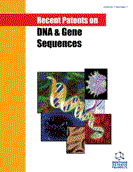Abstract
In the course of evolution, venomous animals developed highly specialized venomous systems that provided for drastic increase in hunting and defense efficiency. Venoms of a vast number of animal species represent complex mixtures of compounds such as ions, biogenic amines, polyamines, polypeptide neurotoxins, cytolytic peptides, enzymes, etc. that exert different functions. Natural toxins are sequentially variable molecules that are very stable structurally and produce pronounced biological effects on molecular targets. High activity made them very attractive in terms of novel structure discovery and characterization. In the present review we draw attention to the structure of polypeptide molecules preferably in the 2-12 kDa molecular mass range produced by various venomous animals that were published in patent literature. The structures were reviewed on the basis of functional relation to molecular targets. We also compared the sequence information from patents with Uniprot and other protein databanks to define structures that were patented but missing from the public databases.
Keywords: Polypeptide toxins, primary structure, application of natural toxins, venomous animals, natural compounds production
 4
4

